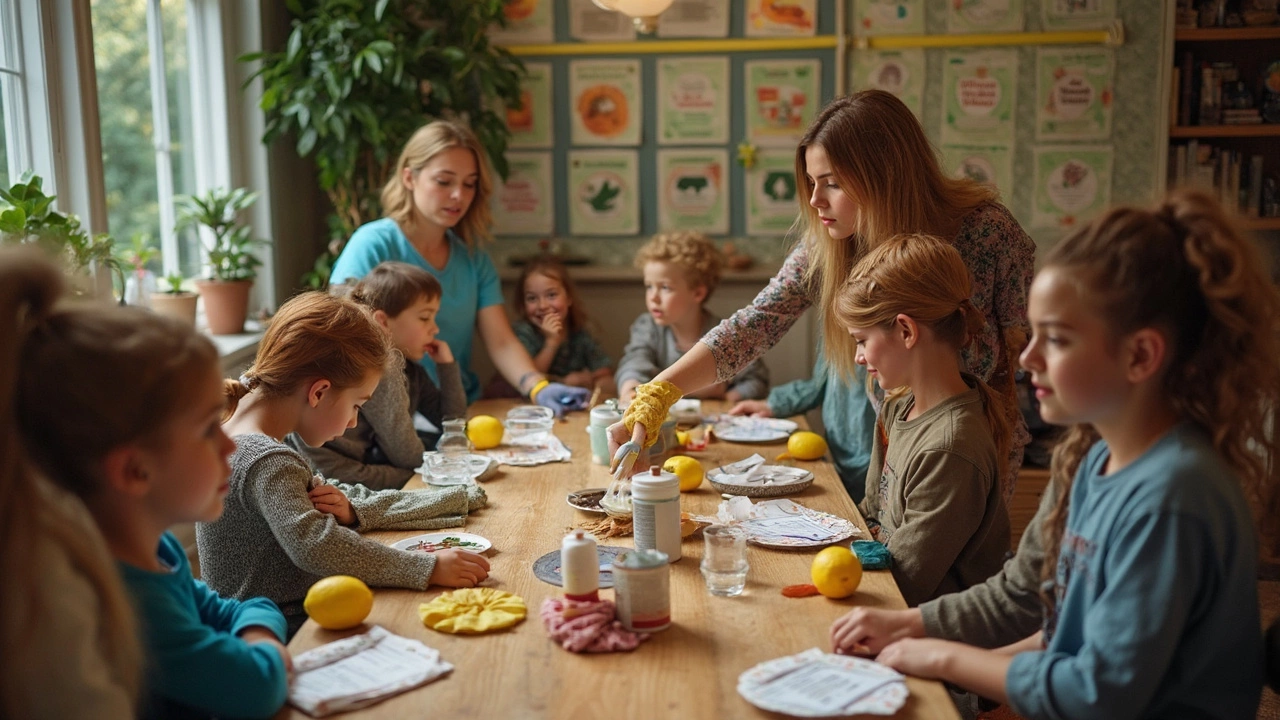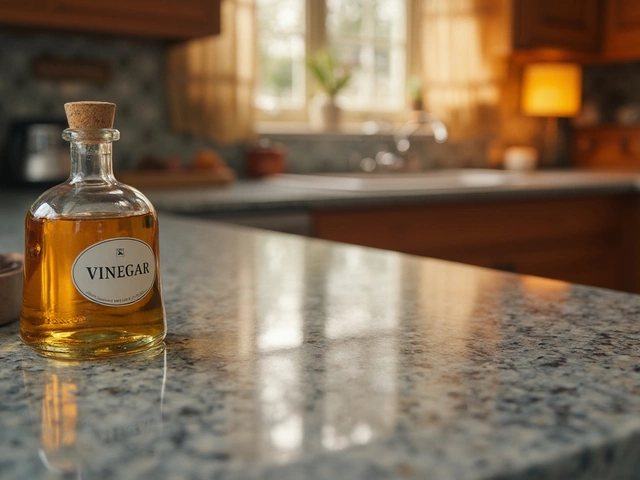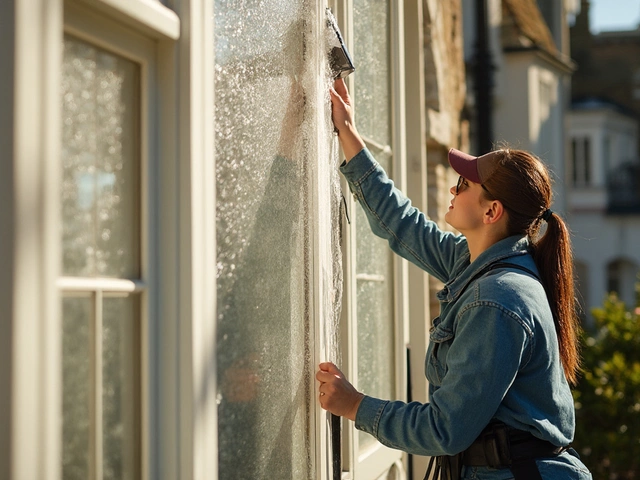If you’ve ever tried to clean your home without leaving a trace on the planet, you’ve probably hit a wall sooner than you’d hoped. Truth is, aiming for 100% eco-friendly cleaning sounds amazing… but it’s way trickier than most people think.
Everyone loves a spotless kitchen or bathroom, especially when they hear those products are “all-natural” or “plant-based.” But here’s a kicker—sometimes those labels are just marketing. Lots of green products still come in plastic, use undisclosed chemicals, or travel halfway across the globe before landing on your shelf. That means even the most angelic eco choices can have a hidden footprint.
So, what’s actually possible? The upsides: there are clever ways to cut waste, use way less plastic, and ditch harsh chemicals forever. The tough part: there’s no button for instant eco-perfection. Still, making a few swaps and staying curious about what really goes into your cleaning stuff can make a serious difference for the planet, and for you. Ready to find out how far you can get?
- What Does 100% Eco-Friendly Cleaning Even Mean?
- The Hidden Problems with Popular ‘Green’ Products
- Simple Swaps: How to Clean Sustainably at Home
- Facing the Limits—and Still Making a Difference
What Does 100% Eco-Friendly Cleaning Even Mean?
When people talk about eco-friendly cleaning, most of us picture using products that don’t mess with the planet or our health. But 100% eco-friendly? That means every part of your cleaning routine—right down to the sponge and packaging—has to leave zero waste and do no harm. That’s a serious commitment, and almost impossible to nail perfectly if you live in a typical city or suburb.
So, what are we really aiming for here? Here’s what full-on eco-friendly cleaning covers:
- Products made only from natural, non-toxic ingredients. Think baking soda, vinegar, lemon juice—nothing cooked up in a lab or sounding like alphabet soup.
- No single-use plastics or packaging that ends up in the ocean or landfill. Reusable, compostable, or refills only.
- Tools that don’t fall apart after a month and can be composted or recycled—like bamboo brushes or cotton rags instead of plastic sponges.
- A supply chain that’s clean. Meaning: no rainforest destruction, no crazy carbon emissions from shipping, and no shady factories behind your cleaning spray.
- Choosing local and homemade whenever possible to cut down on shipping and packaging waste.
But here’s the tough bit: not all green cleaning tips out there mention that every product—even the natural stuff—comes with a footprint. Mining baking soda, growing lemons, or even recycling glass uses up resources and energy. A 2022 report from the Environmental Working Group found that nearly 70% of products labeled “eco-friendly” in stores still had hidden chemicals or used plastic bottles.
| Type of Cleaning Product | Common Footprint Issues |
|---|---|
| Plant-based sprays | Plastic packaging, shipping emissions |
| DIY cleaners | Mining, agricultural impact, sourcing non-local ingredients |
| "Natural" wipes | Non-compostable fabric, preservatives, plastic wrap |
That’s not to say it’s hopeless. If you’re trying to shrink your footprint, being aware of all these bits helps you make smarter choices. 100% is more a guidepost than a goal you have to hit on the nose. Every step closer to real sustainable home cleaning is still worth it.
The Hidden Problems with Popular ‘Green’ Products
It’s tempting to grab anything labeled eco-friendly cleaning or “green” and just trust it’s doing right by the Earth. Here’s the thing: a lot of these products aren’t as squeaky clean as they look. Some just swap out the really harsh chemicals for ones that sound friendlier, but they’re still kind of mysterious. For example, “fragrance” can mean almost anything, including stuff that can cause allergies or mess with indoor air. Companies don’t always have to list every ingredient, so you don’t always know what’s inside.
And don’t forget about packaging. Those “plant-based” cleaners? Most still come in classic single-use plastic bottles. Only about 5% of plastic gets recycled in the U.S. every year, according to the EPA. That means most green bottles end up in a landfill anyway. Even pods and liners labeled as “compostable” or “biodegradable” can take years to break down, unless you have access to a commercial compost facility (which most people don’t).
Shipping is another kicker. There’s a push to buy cool, eco-friendly options online, but shipping all those products adds a carbon footprint. All those trucks, planes, and warehouses? Not exactly a win for your sustainable home goals.
- Greenwashing: Brands love to say “natural” and “non-toxic,” but those aren’t regulated terms. It’s up to us to dig a little deeper.
- Hidden chemicals: Even some “green” sprays use preservatives or surfactants that can be rough on waterways.
- Plastic waste: Eco doesn’t always mean zero waste. Bottles, seals, pumps—all end up as trash if not properly dealt with.
- Carbon cost: Importing “green” products might look good at home, but think about the full supply chain.
If you ever wondered why it can feel impossible to go truly zero waste or 100% natural with your cleaning, this is why. Just because a product says it’s planet-friendly, doesn’t mean it’s a slam dunk for the environment. Being picky with your natural cleaners and keeping an eye on packaging can help you spot the real deal from the hype.

Simple Swaps: How to Clean Sustainably at Home
You don’t need a total home overhaul or fancy gadgets to kick off eco-friendly cleaning. Start with real, repeatable swaps—stuff you’ll actually stick with and that makes a difference.
- Switch to Refillable Bottles: Ditch single-use containers for cleaning sprays and hand soaps. Glass or sturdy plastic bottles can be refilled over and over. There are local refill shops in most cities now, or you can get concentrate tablets online.
- Choose Cloth, Not Paper: It sounds basic, but swapping paper towels for washable rags or old T-shirts takes real pressure off the waste pile. Just toss them in with a regular load of laundry.
- DIY Cleaners: You can clean almost anything at home using a mix of white vinegar, baking soda, a squirt of castile soap, and water. No sketchy chemicals, no hidden scents. If vinegar smells too strong, add a few drops of essential oil—lemon and tea tree are both classics for green cleaning tips.
- Look for Third-Party Seals: Buying something branded "natural" or "eco"? Check for actual certifications—like EPA Safer Choice or EU Ecolabel. They’re not perfect, but they offer a real baseline. Less greenwashing, more genuine sustainable home effort.
- Bulk Buy (If You Can): Buying bigger bags of powder (for laundry, dish soap, etc.), or pooling purchases with neighbors, cuts way down on packaging waste.
- Air Dry Everything: Clean sponges, mop heads, and dishcloths can last longer just by drying them out in the sun. The sun naturally kills off germs, so you’ll stretch supplies and sanitize without chemicals.
Here’s a look at how much you can really shave off your waste with a couple of these swaps:
| Swap | Average Annual Waste Saved (per home) |
|---|---|
| Refillable cleaning bottles | Up to 30 plastic bottles |
| Using rags instead of paper towels | Over 50 lbs of paper waste |
| DIY cleaning products | Nearly 10 lbs of packaging |
It’s not about giant leaps—it’s your daily habits stacking up. Every swap you make chips away at your footprint, and honestly, most days you won’t even miss your old cleaning routine.
Facing the Limits—and Still Making a Difference
Here’s a reality check: chasing 100% eco-friendly cleaning might leave you frustrated, because true zero impact is basically impossible right now. Even if you make your own cleaners and compost the packaging, there’s still energy use, water waste, and all sorts of hidden costs. For example, according to the Environmental Protection Agency, just making household cleaning items accounts for millions of tons of plastic waste every year in the U.S. alone. Even “green” products often get shipped in single-use bottles or with ingredients sourced from far-off places.
But that doesn’t mean small moves don’t add up. Actually, they do—big time. If every American household swapped out just one bottle of conventional cleaner for a truly green, refillable option, we’d save nearly 3 million pounds of plastic waste each year.
Stumped on where to start—or where your choices actually matter? Here are game-changing actions that truly move the needle:
- Buy in bulk or use refill stations: The less packaging you use, the lower your home’s waste footprint. Neighborhood co-ops and even big supermarkets now have refill stations for soap, all-purpose cleaners, and laundry liquid.
- Choose concentrates or tablets: So much of what you buy in a bottle is just water. Concentrates and dissolvable cleaning tablets slash shipping weight and single-use bottles. Backpacking-style solid soaps work for dishes, too.
- Cut out disposable wipes: Microfiber cloths, old t-shirts, or even cloth napkins beat disposable paper towels for almost every task. Plus, you wash and reuse instead of tossing after one go.
- Read the real labels: Look for “fully biodegradable,” “no synthetic fragrance,” and “Phosphate-free.” Don’t just trust green colors or buzzwords—real eco wins mean actual ingredient transparency.
It’s about doing the best you can, not rolling in guilt when perfection is out of reach. As
"Don’t let the perfect be the enemy of the good." — The Environmental Working Groupsays, nobody gets it 100% right, but every better choice stacks up. Set realistic goals, like cutting your cleaning plastic in half in a year, or going fragrance-free. Measure up, see the progress, and keep it moving in the right direction.
Keep in mind, whole neighborhoods or apartment buildings can pool resources for bulk buying or split big jugs of concentrate. Get together, compare what works, and you’ll all save money while shrinking your collective waste.
Making your home more sustainable doesn’t need to be all or nothing. Each swap, refill, or reused rag is another step closer, and that’s something that really counts.




